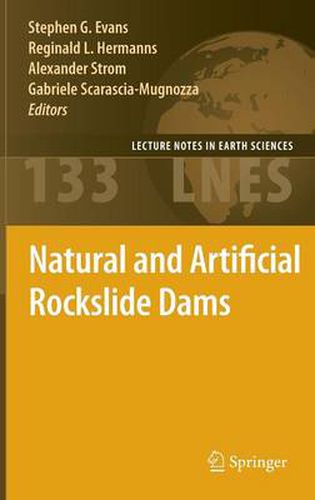Readings Newsletter
Become a Readings Member to make your shopping experience even easier.
Sign in or sign up for free!
You’re not far away from qualifying for FREE standard shipping within Australia
You’ve qualified for FREE standard shipping within Australia
The cart is loading…






This title is printed to order. This book may have been self-published. If so, we cannot guarantee the quality of the content. In the main most books will have gone through the editing process however some may not. We therefore suggest that you be aware of this before ordering this book. If in doubt check either the author or publisher’s details as we are unable to accept any returns unless they are faulty. Please contact us if you have any questions.
In the last one hundred years, a number of catastrophic events associated with rockslide dam formation and failure have occurred in the mountain regions of the world. This book presents a global view of the formation, characteristics and behaviour of natural and artificial rockslide dams. Chapters include a comprehensive state-of-the-art review of our global understanding natural and artificial rockslide dams, overviews of approaches to rockslide dam risk mitigation, regional studies of rockslide dams in India, Nepal, China, Pakistan, New Zealand, and Argentina. Rockslide dams associated with large-scale instability of volcanoes are also examined. Detailed case histories of well-known historic and prehistoric rockslide dams provide examples of investigations of rockslide dam behaviour, stability, and characteristics. The formation and behaviour of rockslide-dammed lakes ( Quake Lakes ) formed during the 2008 Wenchuan Earthquake, China are also comprehensively summarised. The formation, sedimentology and stability of rockslide dams is examined in several analytical papers. An analysis of break-out floods from volcanogenic lakes and hydrological methods of estimating break-out flood magnitude and behavior are reviewed. The use of remote sensing data in rockslide-dammed lake characterisation is explored and a new approach to the classification of rockslide dams is introduced. Finally, a unique section of the book summarises Russian and Kyrgyz experience with blast-fill dam construction in two papers by leading authorities on the technology. The volume contains 24 papers by 50 authors from 16 countries including most of the recognised world authorities on the subject.
$9.00 standard shipping within Australia
FREE standard shipping within Australia for orders over $100.00
Express & International shipping calculated at checkout
This title is printed to order. This book may have been self-published. If so, we cannot guarantee the quality of the content. In the main most books will have gone through the editing process however some may not. We therefore suggest that you be aware of this before ordering this book. If in doubt check either the author or publisher’s details as we are unable to accept any returns unless they are faulty. Please contact us if you have any questions.
In the last one hundred years, a number of catastrophic events associated with rockslide dam formation and failure have occurred in the mountain regions of the world. This book presents a global view of the formation, characteristics and behaviour of natural and artificial rockslide dams. Chapters include a comprehensive state-of-the-art review of our global understanding natural and artificial rockslide dams, overviews of approaches to rockslide dam risk mitigation, regional studies of rockslide dams in India, Nepal, China, Pakistan, New Zealand, and Argentina. Rockslide dams associated with large-scale instability of volcanoes are also examined. Detailed case histories of well-known historic and prehistoric rockslide dams provide examples of investigations of rockslide dam behaviour, stability, and characteristics. The formation and behaviour of rockslide-dammed lakes ( Quake Lakes ) formed during the 2008 Wenchuan Earthquake, China are also comprehensively summarised. The formation, sedimentology and stability of rockslide dams is examined in several analytical papers. An analysis of break-out floods from volcanogenic lakes and hydrological methods of estimating break-out flood magnitude and behavior are reviewed. The use of remote sensing data in rockslide-dammed lake characterisation is explored and a new approach to the classification of rockslide dams is introduced. Finally, a unique section of the book summarises Russian and Kyrgyz experience with blast-fill dam construction in two papers by leading authorities on the technology. The volume contains 24 papers by 50 authors from 16 countries including most of the recognised world authorities on the subject.